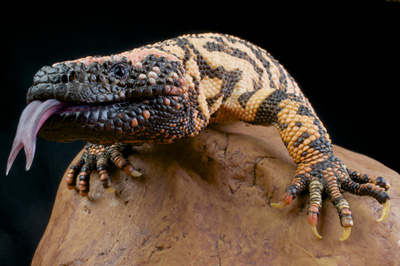Scientists create therapeutic venom database
Posted: 26 November 2015 | Victoria White | No comments yet
Venom Knowledge Base summarises the results of 5,117 studies in the medical literature describing the use of venom toxins as painkillers and as treatments for diseases…

Columbia University data scientists have created the first catalogue of known animal toxins and their physiological effects on humans.

Malayan pit viper
Venom Knowledge Base (VenomKB) summarises the results of 5,117 studies in the medical literature describing the use of venom toxins as painkillers and as treatments for diseases like cancer, diabetes, obesity, and heart failure. Drawn from an automated analysis of the literature, VenomKB documents nearly 42,723 effects on the body. Though modern medicine makes use of only a small fraction of the toxins documented thus far, the researchers hope that the catalogue will spur the discovery of new compounds and medical treatments.
“With this list we can take stock of what we know about venoms and their therapeutic effects” said Nicholas Tatonetti, an assistant professor of biomedical informatics at Columbia University Medical Center and a member of the Data Science Institute. “The questions now is: How can we use this information with other databases to discover new compounds and therapies?”
Venom’s capacity to heal is paradoxically linked to its fast-acting, lethal effects in the wild. Found in more than 173,000 species, venoms evolved over millions of years to target molecules that are often involved in disease. The toxic proteins and amino acids known as peptides that make up venom act on cell receptors and ion channels, controlling how cells behave. By mimicking or altering how these toxins act on specific human cells, researchers can develop drugs that inhibit pain or treat diseases, often with fewer side effects than those of drugs already on the market.
Byetta is made from the venom of the Gila monster
About a dozen major drugs have emerged from this strategy so far. One of the first, an anticoagulant called Arvin, gained favour in the late 1960s after a doctor discovered that ancrod, a protein found in the venom of the Malayan pit viper, could treat blood clots in the legs.

Gila monster
The widely used type 2 diabetes drug Byetta, is made from the toxin exenatide, found in the saliva of the venomous Gila monster, a lizard native to the US and Mexico. Another drug, bombesin, uses a toxin found in the skin of the venomous European fire-bellied toad to treat gastrointestinal disorders. Bombesin’s ability to bind to neuronal tumours has led to interest in developing a florescent version that could guide surgeons around the edges of a tumour.
Five compounds produced by the venomous cone snail have made it to clinical trials, including ziconotide, the generic term for an analgesic similar to morphine.
The Malayan pit viper, Gila monster, European fire-bellied toad, and cone snail account for about 18% of the 5,117 venom-related studies now catalogued in Venom KB. Yet there are 10 million or more venomous species that have yet to be studied. Zoltan Takacs, a toxinologist, estimates there are 20 million venom toxins waiting to be screened.
With VenomKB up and running, Tatonetti and Romano plan to contribute data of their own. Starting with samples of dried venom from the black mamba, they will perform experiments and explore new treatments for chronic pain, diabetes and heart disease.
Related conditions
Diabetes, Heart disease
Related organisations
Columbia University


